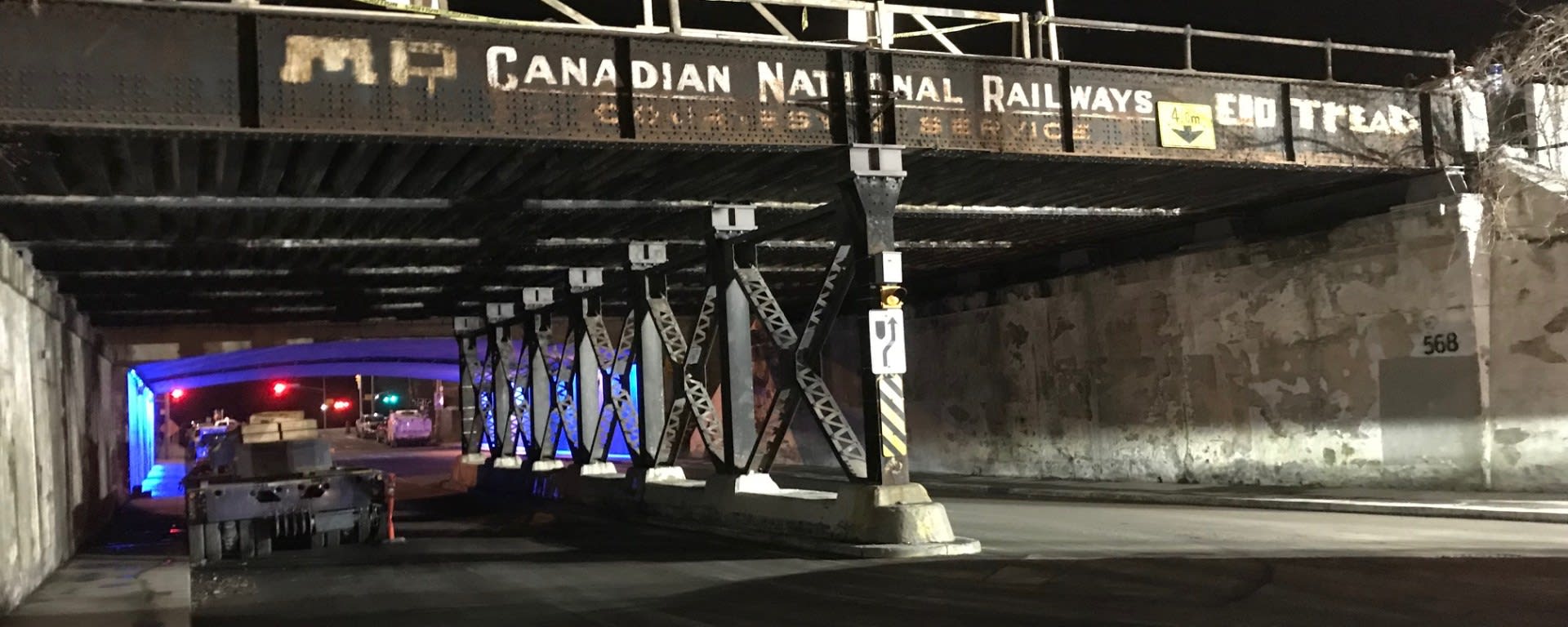Bridges from the past restored for better transit in the future
After nine weekends of work, the Lakeshore West bridge project is finally over.
Dec 7, 2018
The giant blue cranes are gone.
And that signals relief for both the Lakeshore West line and GO Transit customers – as we say ‘thank you for your patience’ during the historic work.
If you traveled along the train corridor on weekends this fall, you saw the congestion that comes with a mammoth construction project. The vital line was being worked on around the clock as crews put in a total of 40,000 combined work hours to bring new life to several century-old bridges and overpasses, some dating back to the Grand Trunk Railway era.
That Grand Trunk was once considered the largest railway in the world, and was the chief line between Montreal and Toronto.
Work involved restoration of six century-old bridges between Mimico and Exhibition GO, including the Humber River Bridge, which weighs 7,000 tonnes. To help balance this in your mind, an average adult elephant comes in at about 4-7 tonnes.
It involved the blue construction cranes lifting new bridge spans, as well as unearthing and replacing layers of ancient building material.
Getting this done means faster and more reliable service for the future.
“When we work on structures like these, we make a mark in history that will extend long beyond our own lives,” said Michael Szewczyk, a project coordinator who’s been involved from the start of the project.
The work is among the most extensive and important he’s ever been a part of and didn’t happen without challenges – or telling signs of the past.
Crews found small pieces of coal that had once blown from the tenders of passing freight trains and landed in original concrete.
They’re proof that time takes a toll on everything created. As Metrolinx adds new infrastructure to offer quadruple the GO Train service, experts will need to continue to maintain the existing network.
The replacement spans at the Humber River Bridge are expected to go beyond a century in their service life, and the rehabilitated bridges south of High Park have had their future extended by about 50 years.
Chris Drew, a transit commuter, took a Lakeshore West train early morning on a Saturday to see – and marvel at – the complicated work being done.
“I had never taken a train on those track and needed to that morning,” said Drew who was on his way to do wedding shopping with his in-laws and future wife.
“I haven’t seen this method of bridge replacement used before. It was almost like a giant Lego set where you can remove and add in new pieces with one snap.”
Drew pointed out these bridges withstood the deluge of Hurricane Hazel. That October, 1954, storm is one of the most famous hurricanes to ever hit Southern Ontario. He remembers his parents and grandparents telling him how bad that was, with winds reaching 110 kilometres per hour and almost 300 millimetres of rain falling over two days. The bridges served us well, said Drew, adding he understands why the work needed to be done to update them.
The work will mean fewer reasons service will be disrupted along the important corridor. And that will help customers see better service in the future.
Jessalynn Selby, Vice President of Customer Service Delivery at Metrolinx, notes work was completed on time. Although customers had less travel options along the line and travel times were longer than normal, she’s grateful for how the work was received.
“We want to say ‘Thank You’ for the patience shown over the past few months” said Selby.
“Our customers were wonderful as they asked us questions and provided feedback and then were often seen helping each other.”
The complete work was done to ensure better and easier GO Transit Service on the Lakeshore West line for years to come. Something customers like Chris Drew can appreciate.
“When I see construction I see hope,” he said. “More trains, faster speeds mean we’ve got to have the infrastructure to handle that, because I’d rather be on the train than stuck on the Gardiner (Expressway).”
A heavy load – what the work added up to:
- 15 track switches replaced
- 8400 feet of track replaced
- 20550 tonnes of track ballast removed plus replaced
- 39640 person-hours of work over the 9 weekend closures
- 7000 tonnes of old bridge removed plus new bridge installed at Humber River
- 3200 tonnes total weight of 5 bridges jacked
- 3300 square meters of high performance waterproofing applied
by Nitish Bissonauth Metrolinx bilingual editorial content advisor
